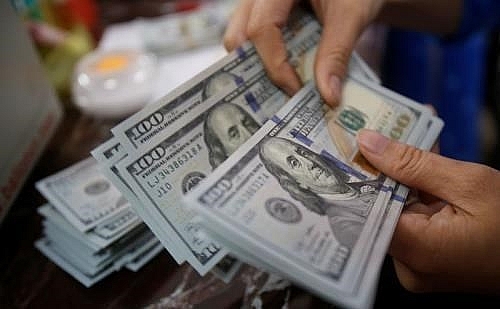Central banks attempt to address sluggish growth
Central banks attempt to address sluggish growth
The State Bank of Vietnam’s latest move to reduce interest rates comes after other central banks around the globe have started easing to combat spreading weaknesses, but experts are warning that such decisions may not yield the desired effects.An interest rate cut by 25 basis points since 2017 by the State Bank of Vietnam (SBV) was recently accompanied by a message that sets a higher bar for further easing later this year. The annual refinancing rate and rediscount rate will be lowered from 6.25 to 6 per cent, and from 4.25 to 4 per cent, respectively.
The annual overnight electronic interbank rate and rate of loans to offset capital shortage in clearance between the central bank and domestic banks will be also cut to 7 per cent. The interest rate of bids of valuable papers through open market operations will be reduced from 4.75 per cent to 4.5 per cent annually.
The cut is made in the context of a stable domestic macro-economy, the SBV wrote in a statement, emphasising that “Inflation in Vietnam remains under control, while monetary and foreign exchange markets are also stable.”
At a press conference held last week, SBV Deputy Governor Dao Minh Tu said that the state bank had successfully kept the local currency relatively stable by reducing certain rates and applying the management policy based on the overall balance of the economy such as imports and exports, public debt, balance of payments, and current accounts.
Economist Nguyen Tri Hieu stated that the cuts would help spur Vietnam’s growth and boost exports, especially in the background of escalating trade tensions between the United States and China.
Market watchers, on the other hand, believe that the SBV’s decision comes after central banks of other countries lowered their key interest rates, showing eagerness to tackle slowing growth and economic uncertainty, particularly through the outlook for the US-China trade war.
For example, India’s Monetary Policy Committee brought down the repo rate by 35 basis points to 5.4 per cent, its lowest level in nine years.
The Bank of Thailand, meanwhile, surprised experts with a cut on its benchmark rate for the first time in more than four years to boost the economy, and said it sees more room to ease as global risks surge.
In the US, the Federal Reserve also reduced rates by a quarter percentage point for the second time since July, as concerns grow about a potential global slowdown.
The European Central Bank is following suit by pushing interest rates further into negative territory in order to support the region’s flagging economy.
The aim of these moves is to perk up a sluggish economy and subpar inflation rates. An economic slowdown has proved more protracted than expected, analysts at The Economist wrote.
“However, this may add upward pressure on inflation in Vietnam,” Hieu said.
According to the latest data provided by the General Statistics Office, Vietnam’s inflation cooled to 2.57 per cent in August, down from 3.52 per cent in August 2018, with the rate having the lowest rise for the past three years.
The exchange rate was also steady, with the US dollar listed at commercial banks to inch up by only some VND10 for buying and VND30 for selling since the end of 2018.
Although analysts have raised expectations of rates reducing for the past few months, many believed that the impact would not be as significant on Vietnam as on other countries, as the local monetary policy is different by directly affecting the money supply through credit growth. Even the interest rate cut in last July has had a very limited impact on the lending interest rate level in the market.
“The SBV’s decision to lower rates is more for orienting the market, thus reinforcing the trend of reducing lending rates that some banks made in early August for a number of priority sectors,” HSBC’s head of global markets Ngo Dang Khoa told VIR.
A general director of a commercial bank also told VIR, “The actual inflows of cash to the financial market might be lower or not remarkable as expected. So we do not need to worry about distortions on the asset market or real estate bubble.”


















